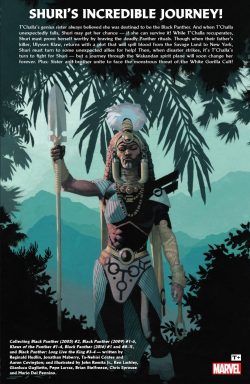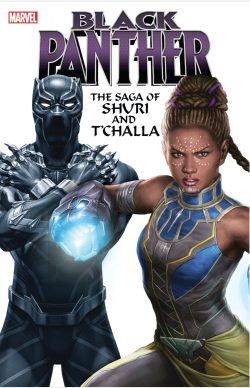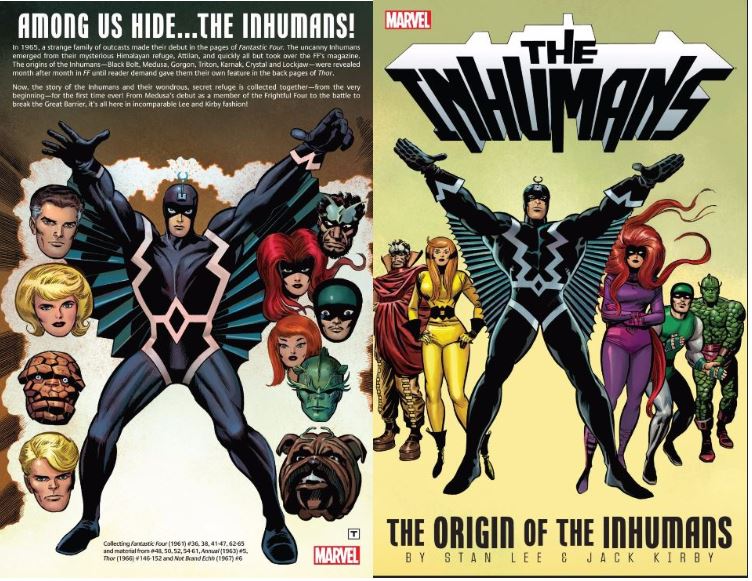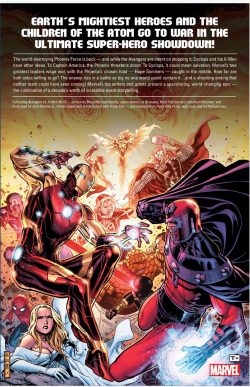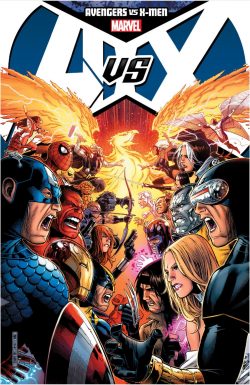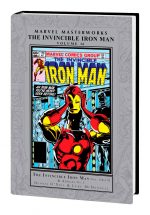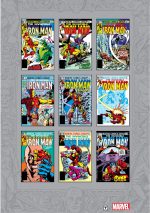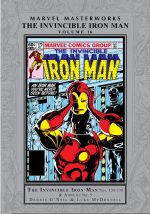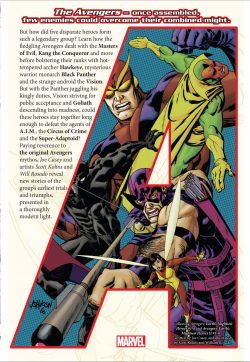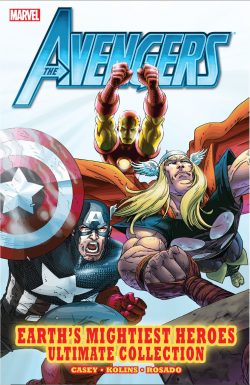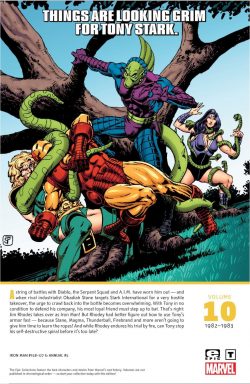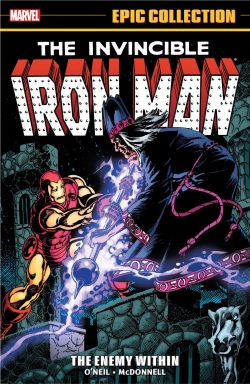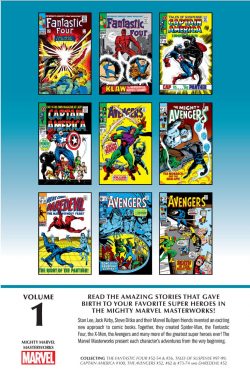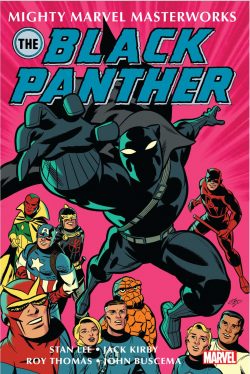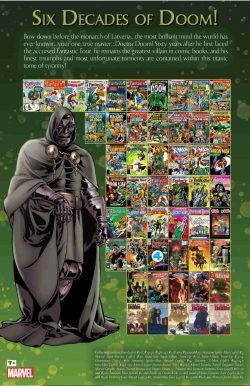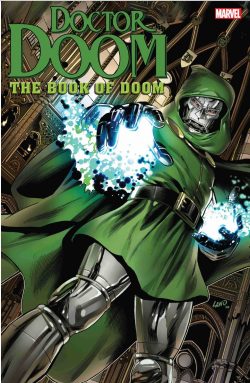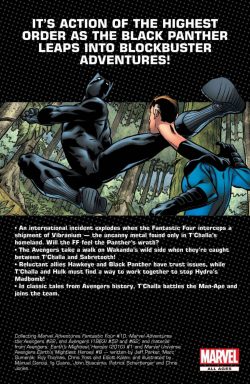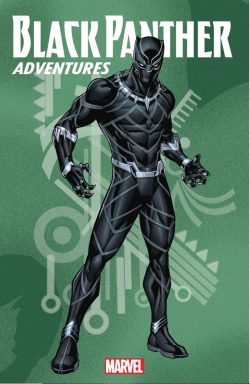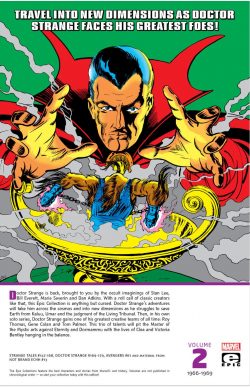
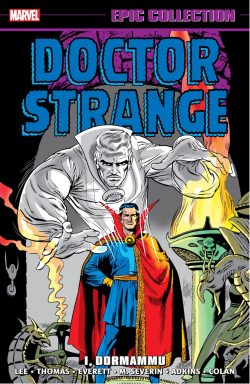
By Stan Lee, Roy Thomas, Dennis O’Neil, Raymond Marais, Jim Lawrence, Dan Adkins, Bill Everett, Marie Severin, George Tuska, Tom Palmer, Gene Colan, John Buscema, Herb Trimpe, George Klein, Sam Grainger & various (MARVEL)
ISBN: 978-1-3029-5315-7 (TPB/Digital edition)
When the budding House of Ideas introduced a warrior wizard to their burgeoning pantheon in the summer of 1963 it was a bold and curious move. Bizarre adventures and menacing monsters remained incredibly popular but mention of magic or the supernatural – especially vampires, werewolves and their eldritch ilk – were proscribed by a censorship panel which dictated almost all aspects of story content.
At this time – almost a decade after a painfully public witch hunt led to Senate hearings – all comics were ferociously monitored and adjudicated by the Comics Code Authority. Even though some of the small company’s strongest sellers were still mystery and monster mags, their underlying themes and premises were almost universally mad science and alien wonders, not necromantic or thaumaturgic horrors.
That might explain Stan Lee’s low-key introduction of Steve Ditko’s mystic adventurer: an exotic, twilit troubleshooter inhabiting the shadowy outer fringes of rational, civilised society.
The company had already – and recently – published a quasi-mystic precursor. Trench-coated savant Doctor Droom – later redesignated Dr. Druid – had an inconspicuous run in Amazing Adventures (volume 1 #1-4 & #6: June-November 1961). He was a psychiatrist, sage and paranormal investigator tackling everything from alien invaders to Atlanteans (but not those Sub-Mariner ruled). Droom was subsequently retro-written into Marvel continuity as an alternative candidate and precursor for Stephen Strange’s ultimate role as Sorcerer Supreme.
Nevertheless, after a shaky start, the Marvel Age Master of the Mystic Arts became an unmissable icon of the cool counter-culture kids who saw in Steve Ditko’s psychedelic art echoes and overtones of their own trippy explorations of other worlds and realms. That might not have been his intention but it certainly helped keep the mage at the forefront of Lee’s efforts to break comics out of the kids-stuff ghetto…
This enchanting full colour compilation collects the mystical portions of Strange Tales #147-168, Doctor Strange #169-179 and Avengers #61, plus a minor mystic mirthquake from Not Brand Echh #13, collectively spanning August 1966 to May 1969.
The previous volume had seen Stephen Strange defeat his arch nemesis Baron Mordo, extra-dimensional overlord Dormammu, Mordo’s unnamed and now-unemployed disciples and sundry other minor menaces before the dark lord returned to seemingly destroy himself in a hubris-fuelled, suicidal attack on the omnipotent embodiment of the cosmos called Eternity…
The cataclysmic chaos ruptured the heavens over infinite dimensions and when the universe was calm again both supra-deities were gone. Rescued from the resultant tumult, however, was the valiant girl Strange had loved and lost who finally introduced herself as Clea. Although Strange despondently left her in the decimated Dark Dimension, everyone knew she would be back…
This time-period – encompassing a full-blown Marvel expansion and Strange’s solo-star status – saw the magician entering a period of creative instability under a welter of briefly employed writers and artists after the originator abruptly left the company at the height of his fame and success in early 1967. The catastrophic cosmic swansong was Ditko’s last hurrah. Issue #147 saw a fresh start under the auspices of co-scripters Lee & Denny O’Neil, with comics veteran Bill Everett suddenly and surprisingly limning the arcane adventures. As Strange returns to his Greenwich Village abode ‘From the Nameless Nowhere Comes… Kaluu!’ sees sagacious mentor The Ancient One rush to his pupil’s side mere moments before an ancient enemy launches a deadly attack from beyond the unknown. O’Neil & Everett then trod new ground by revealing ‘The Origin of the Ancient One!’ even as the mysterious foe intensifies his siege of the Sanctum in #149’s ‘If Kaluu Should Triumph…’
Roy Thomas stepped in to write concluding battle bonanza ‘The Conquest of Kaluu!’ as Master and Student defeat the overwhelmingly powerful intruder through grit and ingenuity. ST #150 then wraps up on an ominous note as with Dormammu gone another ancient evil begins to stir in the Dark Dimension. Throughout his despotic reign the Dread One had apparently been keeping captive a being every bit his equal in power and perfidy and his superior in guile and cruelty. She was his sister and in #151 ‘Umar Strikes!’ returning scribe Lee & Everett document her ascent to the throne, revenge on Clea and plans for Earth before hurling Strange ‘Into the Dimension of Death!’ in #152. Naturally, she also underestimates the puny mortal and Strange begins his retaliation even as he finds himself traversing outer dimensions and ultimately ‘Alone, Against the Mindless Ones!’ The episode is notable for the pencilling debut of magnificent Marie Severin, who applies a sense of potent wonder and film-inspired kinetics to the storytelling. Strange Tales #154 sees Lee, Severin & Umar declare ‘Clea Must Die!’, but the task proves harder than imagined once Strange finds macabre and unlikely allies in the demonic dictator’s own dungeons.
Winning a temporary reprieve, Strange and Clea voyage to Earth where the Ancient One moves her beyond Umar’s reach forever, before ‘The Fearful Finish…!’ escalates the dark goddess’ determination and wrath. In #156 she resolves to dirty her own hands and all too soon, ‘Umar Walks the Earth!’ She is too late. Strange’s mentor has despatched him to a distant realm beyond all worlds on a suicide mission that could endanger all creation…
Artistic superstar-in-waiting Herb Trimpe signed on as inker for #157’s ‘The End of the Ancient One!’ as Strange and his unleashed secret weapon arrive back in time to see off Umar, but only at an unforgivable cost…
Bereft and aghast, Strange then faces alone the monster he has unleashed, unaware that his liberation of the beast Zom has not only sparked an awakening of mystic force all over the world but also invoked the draconian assessment of supernal arbiter The Living Tribunal who rules that Earth must die. With Thomas again scripting, the Cosmic Judge manifests ‘The Sands of Death’ to eradicate the destabilising wild magic infesting the planet but grudgingly accepts Strange’s plea bargain to save the universe from ‘The Evil That Men Do…’
This constant ramping up of tension proceeds as Strange enlists old enemy Mordo, who magnanimously agrees to absorb all that empowering evil energy the Doctor siphons from a legion of newly-empowered sorcerers.
In Strange Tales #160 Raymond Marais, Severin & Trimpe show what a bad idea that is as ‘If This Planet You Would Save!’ depicts the amped-up Baron turning on his benefactor, exiling Strange to a fantastic alien cosmos in #161’s ‘And a Scourge Shall Come Upon You!’ (Marais & new star-turn artist Dan Adkins). In that uncanny other-realm Strange meets former romantic entanglement Victoria Bentley before both are accosted by a macabre mystic tyrant offering aid against the nigh-omnipotent Mordo… for a price.
‘From the Never-World Comes… Nebulos!’ (scripted by James Bond strip writer Jim Lawrence & rendered by Adkins) sees Strange pull all the stops out: smashing Mordo, outwitting Nebulos and stymying The Tribunal’s ‘Three Faces of Doom!’ just in time to save Earth. As his reward, the Good Doctor is despatched by the Grand Arbiter into a ‘Nightmare!’ pursuit of Victoria, arriving on a monster-ridden planet ruled by a techno-wizard named Yandroth who declares himself Scientist supreme of the universe…
The subject of a case of hate at first sight, Strange endures more gadget-laden peril in issue #165 as Yandroth inflicts testing to destruction on ‘The Mystic and the Machine’. Defeated by the hero’s courage and magic, the bonkers boffin activates his doomsday scenario, stating ‘Nothing Can Halt… Voltorg!’ (Lawrence, George Tuska & Adkins) until science proves him wrong…
O’Neil & Adkins teamed up in ST #167 for ‘This Dream… This Doom!’ wherein Strange returns to Earth, indulges in a spot of handy resurrecting and tracks down still-missing Victoria Bentley. That excursion takes the Wizard of Greenwich Village deep into the realm of imagination where Yandroth is waiting for him. The end comes suddenly in #168 as ‘Exile!’ apparently sees the end of the villain and a quick return to home in time for a bold new start.
Big things were happening at Marvel in 1968. After years under a restrictive retail sales deal, The House of Ideas secured a new distributor and were finally expanding with a tidal wave of titles. “Split-Books” like Strange Tales were phased out in favour of solo series for their cohabiting stars and, for the Master of the Mystic Arts at least, that meant a bit of rapid reset. The expansion brought a measure of creative stability as the mystic master now explored the unknown in his own monthly solo title thanks to a neat moment of sleight of hand: assuming the numbering of Strange Tales under his own shingle.
To begin the new era of sorcerous super-shenanigans Thomas & Adkins resumed with a reworking of the Mage’s origins. Extrapolating and building upon the Ditko masterpiece from Strange Tales #115, ‘The Coming of Dr. Strange’ details how he was once America’s greatest surgeon. A brilliant man yet greedy, vain and arrogant, the healer cared nothing for the sick except as a means to wealth and glory. When a self-inflicted, drunken car-crash ended his career, Strange hit the skids.
Fallen as low as man ever could, the debased doctor overheard a barroom tale leading him on a delirious odyssey – or, perhaps more accurately, pilgrimage – to Tibet, where a frail, aged mage changed his life forever. Eventually, enlightenment through torturous daily redemption transformed Stephen the derelict into a solitary, dedicated watchdog at the fringes of humanity, challenging every hidden danger of the dark on behalf of a world better off not knowing what dangers lurk in the shadows.
The saga also featured his first clash with the Ancient One’s other pupil Mordo, revealing how Strange thwarted a seditious scheme, earning the Baron’s undying envious enmity…
The expanded exploration of the change from elitist, dissolute surgeon to penitent scholar and dutiful mystic guardian of humanity neatly segues into another clash with a lethally persistent foe as ‘To Dream… Perchance to Die!’ (#170) finds the Ancient One trapped in a coma thanks to the malevolent lord of dreams. To wake his master, Strange impetuously enters the astral realms and defeats Nightmare on his own terms and turf after which #171 introduces someone who will become a key contributor to the mystic’s career.
Pencilled by eventual inker supreme Tom Palmer, with Adkins supplying finishes, ‘In the Shadow of… Death!’ sees Strange lured away from Earth by news of long-lost Clea. To facilitate her rescue, the sorcerer unthinkingly calls on Victoria Bentley, unaware or uncaring of her romantic feelings for him.
Their trek through the outer deeps of The Realm Unknown is fraught with deadly traps and peril, but does lead to missing Clea… after Bentley is captured and Strange is ambushed by his most powerful and hate-filled foe…
A magical creative team formed for Doctor Strange #171 as Gene Colan signed on for an astoundingly experimental run, with Palmer now handling inks. Humanity is endangered by ‘…I, Dormammu!’ as the Dark Lord reveals how he has orchestrated many recent attacks designed to weary and drain Earth’s champion. The gloating fiend shares how his apparent destruction battling conceptual being Eternity in fact resulted in transdimensional exile and the subjugation of a demonic race dubbed Dykkors: now his eager and willing foot-soldiers lurk, ready to ravage the realms of Mankind. The Dark Despot has even suborned his hated sister and former foe Umar the Unspeakable to his scheme…
As always, Dormammu underestimates the valour and ingenuity of Strange. ‘…While a World Awaits!’, the monstrous conqueror leads a demonic army through the Doorway of Dimensions, leaving the human mage time to liberate Clea and Victoria, before engaging the fearsome forces in a mystic delaying tactic that again allows Dormammu to defeat himself…
With former associate Dr. Benton seeking to convince Strange to abandon crazy charlatanry for a life of respectable medical consultancy, #174 sees the Master of the Mystic Arts helping magical Clea adapt to mundane life on Earth. However, ‘The Power and the Pendulum’ also finds him accompanying brave, secretly despondent Victoria home to England, before being diverted to a foreboding castle where sinister Lord Nekron has laid an eldritch trap.
The crazed noble has made a bargain with hellborn Supreme Satannish, offering his soul for fame and immortality. Instead, the Lord of Lies devised a counter-offer, calling for the substitution of another mystic at the end of one year. With time running out and Strange fitted up for the switch, doom seems inevitable, but Earth’s champion has a timely trick to play…
The late sixties were an incredibly creative period and comics greatly benefitted from that atmosphere of experimentation. Colan used page layouts in wildly imaginative ways to stun readers, but that same expanded vision has often been cited as the reason for the title’s poor sales. I suspect the feature’s early cancellation was as much the result of increasingly sophisticated and scary stories from Thomas, who early on tapped into growing global fascination with supernatural horror and urban conspiracy such as seen in #175’s ‘Unto Us… the Sons of Satannish!’ – coincidentally, the last issue to carry the original title logo.
Just like Ira Levin’s 1967 book and hit 1968 movie Rosemary’s Baby, Strange’s next case involved devil-worship in safely mundane Manhattan, working in secret to achieve diabolical aims. Denied access to the film’s simmering sexuality and mature themes, Thomas, Colan & Palmer stuck to comic book strengths as Clea’s immigrant experience abruptly encompasses ostracization, isolation, suspicious reactions and even assault by ordinary New Yorkers. This leads her straight into the hands of hidden cult The Sons of Satannish, whose charismatic leader Asmodeus deals with the devil, attempting to win ultimate power by eradicating Strange and replacing him in #176 which whilst sporting a new, eerie and abbreviated logo and masthead, asked ‘O Grave Where is Thy Victory?’…
Those aforementioned sales problems were not going away and #177’s concluding chapter ‘The Cult and the Curse’ addressed the issue in tried & true manner. Exiled from his own existence and persona, Strange saved Clea but could only strike back and reclaim his life by magically reinventing himself… by devising a brand new look. The mask & tights of a traditional superhero were apparently the only way to outmanoeuvre Asmodeus, but sadly, not in time to stop him activating a deathbed curse to destroy the world…
The super-suited & booted thoroughly modern mage needed information to proceed, and Dr. Strange #178 has him seeking to question the Satannish worshippers Asmodeus had cruelly banished. Once again exploiting poor Victoria Bentley, Strange recognises her new neighbour Dane Whitman as part-time Avenger The Black Knight and a plea for aid results in an assault on the dimension of decay-god Tiborro ‘…With One Beside Him!’
The saga concluded in Avengers #61 with ‘Some Say the World Will End in Fire… Some Say in Ice!’ by Thomas, John Buscema & George Klein. After Asmodeus’ recued minions reveal the cult’s failsafe spell unleashed Norse demons Surtur and Ymir to destroy the planet, Strange and Black Knight recruit The Vision, Black Panther and Hawkeye to help them save the globe on two fronts…
Although the comics spellbinding ends here, also on offer is the cover of Dr. Strange #179: a Barry Smith treat from 1969 fronting an emergency reprint of Lee & Ditko’s ‘The Wondrous World of Dr. Strange’ from Amazing Spider-Man Annual #2. It precedes one last strip surprise: Marie Severin’s cover of Not Brand Echh #13 (May) and comedy treat ‘Dr. Deranged vs Deadpan!’: a frantic spoof by Thomas, Colan & Sam Grainger with “Marble Comics’” madcap mage facing off against lampooned DC supernatural stalwarts Deadman and The Spectre (or Spookter right here, right then…). Also on view are the covers by Jack Kirby, Everett, Jim Steranko, Severin Adkins, Colan, John Buscema and Barry (not yet Windsor) Smith and a selection of original art, beginning with an unused try-out page by Palmer & Adkins, full pages by Adkins, Colan & Palmer and cover art to #174 and 175, topped off with a House Ad heralding the 1968 bifurcation of Strange Tales.
The Wizard of Greenwich Village was always an acquired taste for mainstream superhero fans, but the pioneering graphic bravura of these tales and the ones to come in the next volume left an indelible mark on the Marvel Universe and readily fall into the sublime category of works done “ahead of their time”. Many of us prefer to believe Doctor Strange has always been the coolest of outsiders and most accessible fringe star in Marvel’s firmament. This glorious grimoire is a miraculous means for old fans to enjoy his world once more and a perfect introduction for recent acolytes or converts created by the movie iteration.
© 2024 MARVEL.

